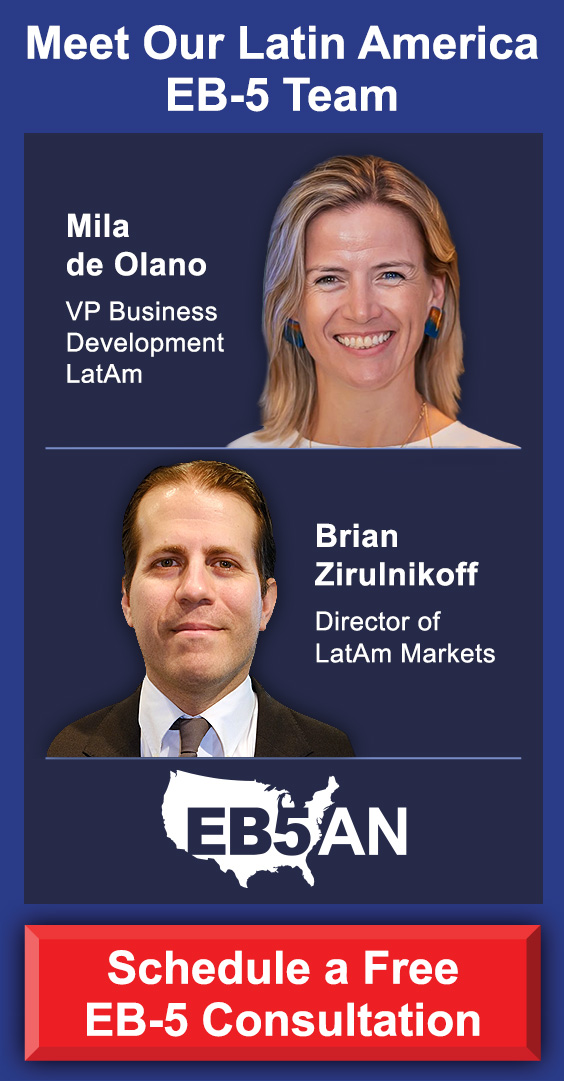For many international families, the dream of sending a child to a prestigious U.S. university is as much about opportunity as it is about long-term planning. Among the pathways that offer not only access to higher education but also a long-term stake in the American future, the EB-5 Immigrant Investor Program stands out.
Yet the benefits of this visa program extend well beyond the parents. It can fundamentally reshape a child’s academic prospects, particularly when carefully timed to align with their college ambitions. In this article, we’ll explain how to time your EB-5 investment in accordance with your children’s U.S. college education.
Why the EB-5 Program Appeals to Parents
Understanding the Timeline
Avoiding the “Age-Out” Risk
Strategic Timing for College Entry
Educational Advantages That Go Beyond Tuition
What Happens After Graduation?
Planning With Purpose
Why the EB-5 Program Appeals to Parents
At its core, the EB-5 program allows foreign nationals to obtain U.S. permanent residency by investing $1,050,000, or $800,000 in targeted employment areas (TEAs), in a qualifying project that creates at least 10 full-time jobs for U.S. workers. Successful applicants and their immediate families, including children under 21, receive Green Cards. For families with college-bound children, this benefit translates into more than just legal residency.
Permanent resident status enables access to in-state tuition at public universities, eligibility for federal financial aid, and greater freedom in the college application process. These benefits can lead to significant savings and reduced stress during what is otherwise a demanding time in a student’s life.
But for these advantages to be fully realized, timing is everything.
Understanding the Timeline
The EB-5 process is multi-phased and can take a few years from start to finish. It begins with selecting a project and making the investment, followed by the submission of the I-526E petition. This petition signals to U.S. Citizenship and Immigration Services (USCIS) that the investment is compliant with program rules.
The I-526E petition itself can take several months to be processed, though timelines can fluctuate based on many variables. For example, if you invest in a rural project, it might take as little as 6 months for your petition to be approved.
Once approved, the investor and their family can either go through consular processing (if outside the U.S.) or adjust their status (if already in the U.S.). After this step, they receive conditional Green Cards valid for two years.
Before these expire, families must file the I-829 petition to remove conditions and obtain permanent residency. EB-5 investors may apply for U.S. citizenship five years after receiving their initial conditional Green Card.
This timeline makes it critical for families to plan well ahead of their child’s anticipated college start date, especially if they wish to unlock the full spectrum of educational advantages that EB-5 can offer.
Avoiding the “Age-Out” Risk
One of the most crucial timing considerations is the age of the children included in the EB-5 application. Only children who are unmarried and under 21 can be part of their parent’s petition. The good news is that the Child Status Protection Act (CSPA) allows the child’s age to be “frozen” under certain circumstances.
However, this protection has limits, particularly when delays are significant. Starting the process too late risks your child aging out, thereby requiring a separate immigration strategy altogether. Ideally, families should begin the EB-5 process as early as possible, giving a cushion for potential delays and ensuring eligibility.
Strategic Timing for College Entry
Let’s say your child just started high school. Filing the I-526E petition during this time increases the odds of securing a Green Card before the college application process begins.
Beyond legal residency, this timing matters for tuition. Residency requirements vary from state to state. In most states, permanent residents must live there for about 12 months before qualifying for in-state tuition, though requirements can vary. Delaying the process could mean missing this residency window, leading to dramatically higher out-of-state or international tuition rates, sometimes upwards of $30,000 to $40,000 more per year.
Educational Advantages That Go Beyond Tuition
Green Card status doesn’t just unlock financial benefits, it simplifies the entire college experience. International students face strict visa limitations, including restrictions on work and internship opportunities. In contrast, permanent residents can work freely, apply for internships without complex paperwork, and stay in the U.S. during academic breaks without concern about re-entry.
There’s also a psychological benefit. For students who’ve grown up in multiple countries or lived on temporary visas, having the security of permanent residency in the U.S. can be a major stabilizing force during their formative college years.
What Happens After Graduation?
Many international students on F-1 visas face uncertainty after graduation. They may need to find an employer willing to sponsor them for an H-1B visa, a process fraught with unpredictability. EB-5 families avoid this altogether. Children of EB-5 investors who receive Green Cards are free to remain in the U.S., seek employment, or even start their own businesses.
For parents thinking not just about college, but about career opportunities and a stable future for their children, this is a key advantage. Your investment isn’t just securing a degree—it’s creating long-term freedom and flexibility.
Planning With Purpose
The EB-5 program is a powerful tool, but its benefits are maximized only through proactive planning. For families with children eyeing a U.S. education, starting the EB-5 process at the right time, ideally at least two to three years before college, can make the difference between navigating higher education as a foreign national or embracing it as a resident.
With the right strategy, your child could not only attend a top-tier U.S. university but do so with the legal, financial, and personal security that comes from calling America home.
EB5AN has helped more than 2,700 families from 70+ countries become lawful permanent residents of the United States. Our team has more than a decade of experience and offers clients first-rate, low-risk EB-5 regional center projects with a 100% USCIS project approval rate.
If you would like to know more about your EB-5 investment options, book a free call with our expert team today.










